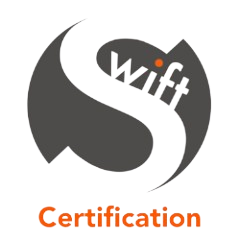Workplace stress isn’t just a buzzword anymore – it’s a full-blown crisis. Across the UK, businesses are grappling with rising levels of burnout, anxiety, and mental fatigue. And while physical safety remains a cornerstone of health and safety management, today’s professionals are legally and ethically bound to consider psychosocial hazards too.
ISO 45001, the international standard for occupational health and safety, has evolved to reflect this reality. It’s no longer enough to prevent slips, trips, and falls – organisations must also address the invisible risks that affect how people feel, think, and function at work.
The Holistic View of ‘Health’
ISO 45001 takes a broad view of health, and rightly so. Clause 6.1.2 of the standard requires organisations to identify hazards and assess risks to both physical and mental wellbeing. That means psychosocial factors are firmly on the radar.
So, what are we talking about when we say psychosocial risks? It’s not just stress in the abstract. These risks include:
- Excessive workload and unrealistic deadlines
- Lack of autonomy or control over one’s work
- Poor communication and unclear expectations
- Bullying, harassment, or toxic workplace culture
- Job insecurity or constant organisational change
- Isolation, especially in remote or hybrid roles
- Lack of recognition or reward
- Conflicting demands or role ambiguity
- Inadequate support from managers or peers
These aren’t fringe issues – they’re everyday realities for many UK workers. And when left unmanaged, they can lead to absenteeism, presenteeism, high turnover, and even long-term health conditions.
ISO 45001 doesn’t just suggest you look at these risks; it requires it. The standard calls for a systematic approach to hazard identification, risk assessment, and control measures. That includes psychosocial hazards, which must be treated with the same rigour as physical ones.
The Actionable Guidance: ISO 45003
If ISO 45001 sets the expectation, ISO 45003 delivers the how-to. Published as a guidance standard, ISO 45003 helps organisations practically identify, assess, and manage psychosocial risks in the workplace.
It’s not a certification standard in itself, but it’s a vital companion to ISO 45001. Think of it as the toolkit that turns policy into practice.
ISO 45003 outlines key areas to focus on, including:
- Leadership behaviours and organisational culture
- Job design and workload management
- Communication and change management
- Support systems and employee participation
- Incident reporting and feedback mechanisms
It also encourages businesses to foster a culture of psychological safety where people feel safe to speak up, ask for help, and challenge poor practices without fear of reprisal.
From a certification perspective, ISO 45001 auditors will look for evidence that psychosocial risks are being considered in your OH&S management system. That means documented risk assessments, clear policies, and active engagement with staff.
Clause 5.4 (Consultation and Participation of Workers) and Clause 7.4 (Communication) are particularly relevant here. They require organisations to involve workers in decision-making and ensure open, two-way communication, both of which are critical for managing psychosocial risks.
Why It Matters and What to Do Next
Let’s be clear: managing psychosocial risk isn’t just about ticking boxes. It’s about protecting your people – mind and body alike. It’s about creating a workplace where wellbeing isn’t a poster on the wall, but a lived experience.
And it’s about showing your clients, regulators, and stakeholders that you take health and safety seriously, not just in the physical sense, but in the human one.
At Swift Certification, we understand that modern workplaces face complex challenges. Our ISO 45001 audits don’t just look at hard hats and hazard signs: we assess your culture, your communication, and your commitment to holistic safety.
If you’re ready to demonstrate that your OH&S system protects the whole person, we’re here to help. From initial assessment to final certification, we’ll guide you through the process with clarity, professionalism, and a genuine understanding of what modern safety looks like.




